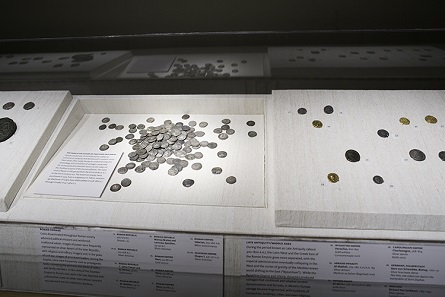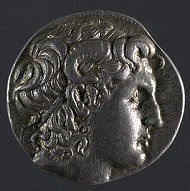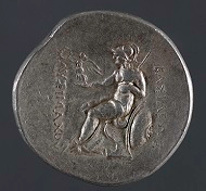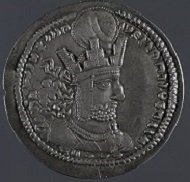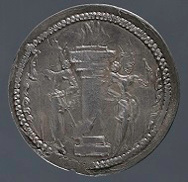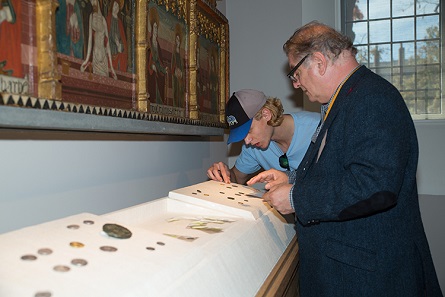January 19, 2017 – In fall 2016, Princeton students, working with Alan Stahl, curator of numismatics at the Princeton University Library, curated an installation of coins drawn from the collections of the Art Museum, the Department of Near Eastern Studies, and the Library’s Department of Rare Books and Special Collections.
View inside the new permanent numismatic installation. Photo courtesy of the Princeton University Art Museum.
Throughout antiquity and the Middle Ages, coins provided a critical vehicle for political legitimation and for the display of cultural and religious traditions. Coinage served as a form of mass communication, distributing visual and textual messages which were carefully controlled by the powerful.
Not only ancient coins serve as means to reconstruct different aspects of economic history. Photo courtesy of the Princeton University Art Museum.
The patterns of minting and currency distribution have enabled scholars to reconstruct the economies of the ancient and medieval Mediterranean worlds, from trade routes to inflation rates during times of economic crisis. The installation, on view in the Museum’s galleries of medieval art, traces this fascinating history through a selection of 33 coins from the sixth century b.c. to the fourteenth century a.d.
This Sasanian drachma also forms part of the new installation. Photo courtesy of the Princeton University Art Museum.
Also featured is a hoard – a group of coins buried for safety by someone in antiquity and discovered in modern times – of 155 drachmas from the Parthian Empire of the Iranian plateau, Rome’s leading rival in the period from the third century b.c. to the third century a.d.
Curator Alan Stahl and student Constantin Weickart, preparing the installation. Photo courtesy of the Princeton University Art Museum.
The installation was curated by Hannah Baumann, Class of 2018, Daniel Elkind, Class of 2017, and Constantin Weickart, Class of 2017.
To visit the Princeton University Art Museum website, please click here.
More information on the new installation is available in an article published in The Daily Princetonian.
And you can also find the Students of the Princeton University Art Museum on Facebook.





